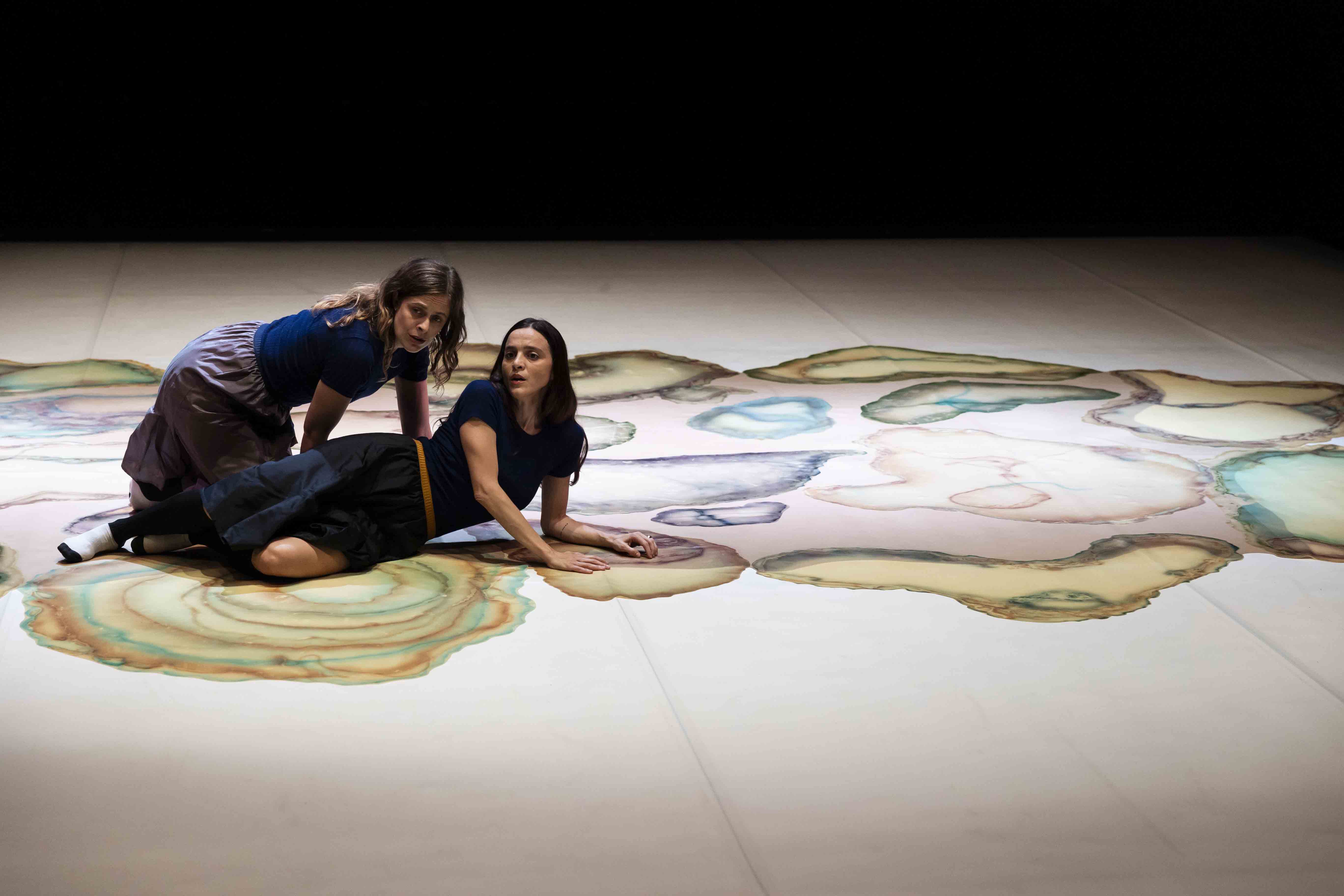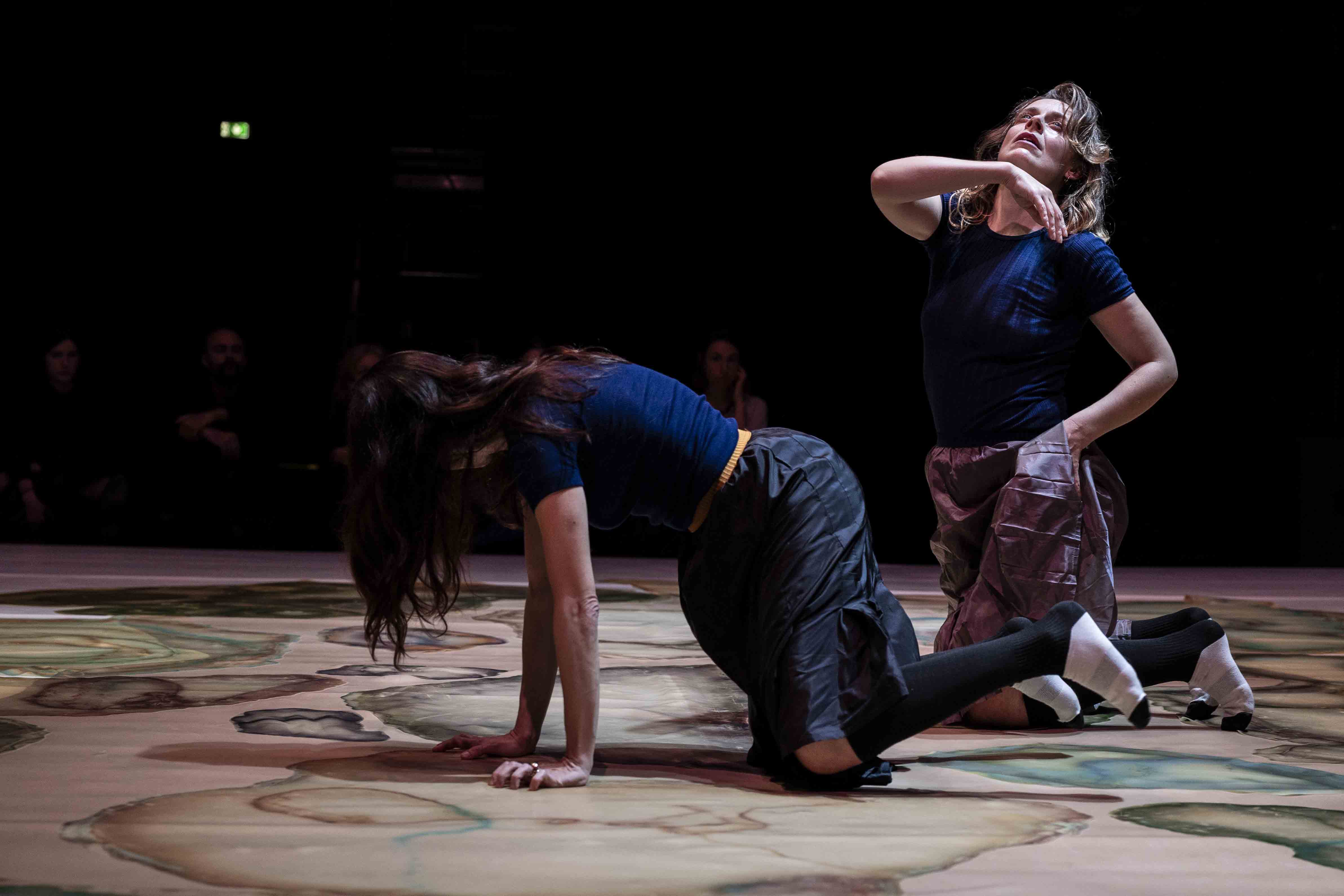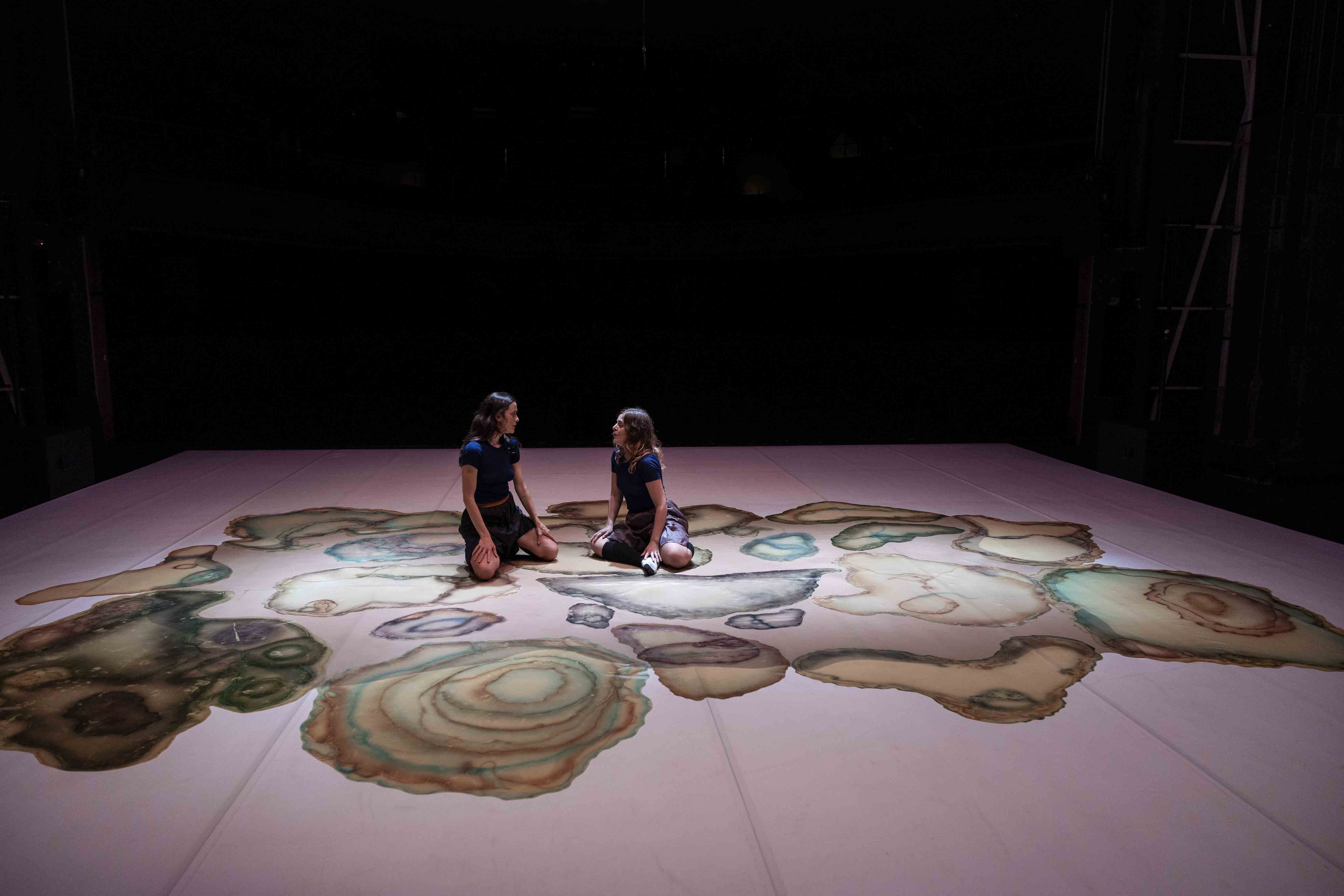


I pianti e i lamenti dei pesci fossili


On the blurred boundary between organic and inorganic, between life and non-life, the fossil is a material and poetic testimony to the passing and layering of time.
I pianti e I lamenti dei pesci fossili (The cries and moans of fossil fish) attempts to build relationships between immensely distant and different bodies and times, mourning the eternal cycle of the transformation of matter, life and death, in the context of the Sixth Extinction.
The dancers' bodies explore the possibilities of relationship through two interfaces: the skin or membrane, which serves as the engine of movement by connecting the inside and outside of the body; and the air, which is crossed by their voices and transformed into a “space before any location.” The performance takes the form of a progressive layering of bodily and vocal practices and recalls the very structure of the fossil.
Production Associazione L'Altra.
Co-production: Triennale Milano Teatro; Fondazione del Teatro Grande di Brescia; Festival
Aperto/Fondazione i Teatri Reggio Emilia; Centro Nazionale di Produzione della Danza Virgilio Sieni;
Snaporazverein; Short Theatre.
Associate artist Triennale Teatro Milano 2021-2024.
In collaboration with Dialoghi – Residenze delle arti performative a Villa Manin 2022 – 2024; as
part of the choreographic residencies project Lavanderia a Vapore; supported by Primavera dei
Teatri.
Company funded by MIC - Ministry of Culture.
Dance and voice
Annamaria Ajmone, Veza Maria Fernandez
Set and images
Natália Trejbalová
Research, dramaturgical collaboration
Stella Succi
Outfits
Fabio Quaranta
Lighting design
Elena Vastano
Sound set consulting
Attila Faravelli
Web project
Giulia Polenta
Organization
Francesca d'Apolito
Distribution
Alessandra Simeoni
PRESS
"Triennale Radio Show w/ Annamaria Ajmone 06-11-2024
Radio Raheem (2024)

"Chiunque si trovi alle prese con un nuovo materiale si rende conto ben presto che quello che ne determina il comportamento spesso non ha a che vedere con la sua composizione o struttura più interna, che in chimica si chiama bulk, ma con quello che succede sulla sua superficie. L'importante è quello che succede nella regione in cui si realizza l'incontro, a volte semplice e più spesso complicato, tra quel materiale e qualcos'altro. L'interfaccia, in chimica, è definita proprio come la regione in cui due sostanze, dotate di proprietà chimico-fisiche diverse, si incontrano."
Laura Tripaldi, “Menti parallele”
